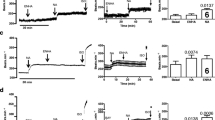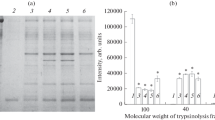Abstract
DIGITALIS and related steroid glycosides exert two well established action: augmentation of the contractile force of cardiac muscle, the basis for the clinical use of these drugs; and inhibition of Na-K-ATPase, a ubiquitous membrane enzyme concerned with maintenance of transcellular ionic gradients. There is much evidence to support the disputed view that the inotropic effect of the cardiotonic steroids is a direct result of Na-K-ATPase inhibition1,2. In a previous study3 a large number of steroids, drugs and other substances were screened for potential activity in a radioreceptor assay for cardiac glycosides. High affinity saturable binding of 3H-ouabain to a particulate fraction from dog heart was highly specific and antagonised only by cardioactive glycosides or their aglycones and certain steroids related to hydroxyprogesterone. The most potent progestins active in the binding assay shared certain structural features: a 17α-acetoxy moiety and unsaturation or substitution in the B ring. Of the 17α-acetate progestins available for testing in the radioreceptor assay, chlormadinone acetate (CMA), 3,5-diene-3-one-17α-ol-6-chloro-pregn-17-acetate, was the most active. In this report we describe results of studies with CMA designed to ascertain other potential digitalis-like actions. Digitalis-sensitive processes include ion and sugar flux in rat hemi-diaphragm4 and guinea pig atrium5 and Na-K-ATPase activity in several tissues2.
Similar content being viewed by others
References
Akera, T. Science 198, 569–574 (1977).
Schwartz, A., Lindenmayer, G. E. & Allen, J. C. Pharmac. Rev. 27, 3–134 (1975).
Kim, R. S., Chow, E., Queen, G. & LaBella, F. S. Proc. Can. Fedn biol. Soc. 21, 156 (1978).
Bihler, I. Biochim. biophys. Acta 163, 401–410 (1968).
Bihler, I. & Sawh, P. C. J. molec. cell. Cardiol. 7, 345–355 (1975).
Bihler, I. & Sawh, P. C. J. molec. cell. Cardiol. 11 (in the press).
Bihler, I. in Recent Advances in Studies in Cardiac Structure and Metabolism Vol. 4 (ed. Dhalla, N. S.) 209–216 (University Park Press, Baltimore, 1974).
Neely, J. R., Libermeister, H. & Morgan, H. E. Am. J. Physiol. 212, 815–822 (1967).
Schwartz, A., Matsui, H. & Laughter, A. H. Science 160, 323–325 (1968).
Sawh, P. C. & Bihler, I. Can. J. Physiol. Pharmac. 54, 708–713.
Thomas, R., Rowtagy, J. & Gelbart, A. J. Pharmac. exp. Ther. 191, 219–231 (1974).
Author information
Authors and Affiliations
Rights and permissions
About this article
Cite this article
LABELLA, F., BIHLER, I. & KIM, R. Progesterone derivative binds to cardiac ouabain receptor and shows dissociation between sodium pump inhibition and increased contractile force. Nature 278, 571–573 (1979). https://doi.org/10.1038/278571a0
Received:
Accepted:
Published:
Issue Date:
DOI: https://doi.org/10.1038/278571a0
- Springer Nature Limited





